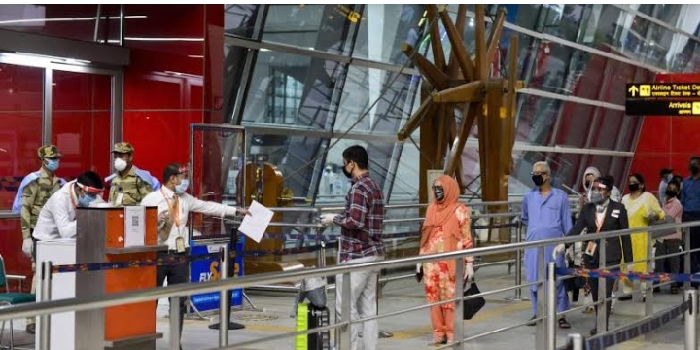New Delhi, Feb 4: Four-month-old Mohammed Jahaan accompanied his mother almost every day to the Shaheen Bagh demonstration where he was a favourite with the protesters who would take turns to hold him and often draw the tricolour on his cheeks.
Jahaan will not be seen at Shaheen Bagh anymore. He died last week after acquiring a severe cold and congestion following exposure to the winter chill at the outdoor demonstration. His mother is, however, undeterred and determined to participate in the protests, saying it is "for the future of my children".
The infant's shattered parents, Mohammed Arif and Nazia, live in a tiny shanty put together with plastic sheets and cloth in Batla House area and have two other children -- a five-year-old daughter and a one-year-old son.
Hailing from Bareilly in UP, the couple is barely able to make ends meet. Arif is an embroidery worker and also drives an e-rickshaw. His wife helps him in his embroidery work.
"I haven't been able to earn enough in the last month despite driving the battery rickshaw in addition to my embroidery work. Now with our baby's demise, we have lost everything," he said, showing a picture of little Jahaan wearing a woolen cap that read 'I Love My India'.
A visibly disturbed Nazia said Jahaan passed away in his sleep on night of January 30 after returning from the protests.
"I had returned from Shaheen Baag at around 1 AM. After putting him and other kids to sleep, even I went to sleep. In the morning, I suddenly found him motionless. He was gone in his sleep," she said.
The couple said they took their motionless baby to the nearby Alshifa Hospital on the morning of January 31 where he was declared dead on arrival.
Nazia, who had been visiting the Shaheen Bagh demonstration everyday with Jahaan since December 18, says that he died after catching a cold that turned lethal.
She said she didn't realise that his congestion was so severe. However, the baby's death certificate issued by the hospital does not mention any specific reason for the death.
Shazia, a neighbour who was present at the couple's home, said Nazia had fought with her mother and husband to visit Shaheen Bagh everyday. Nazia would gather all women in the bylane outside her house so that they could together walk to the demonstration, around 2 km away. Sometimes, Arif would drop some of them to Shaheen Bagh on his e-rickshaw.
Nazia said she strongly feels that the CAA and NRC are against the welfare of all communities and will join the Shaheen Bagh protests, but this time without her children.
"Why was I doing this? For my children and the children of all us who need a bright future in this country," she told PTI.
"The CAA divides us on religion and should never be accepted. I don't know if there is politics involved but I know that I must question what is against the future of my children."
Arif, however, blamed the NRC and CAA for his child's death.
"Had the government not brought CAA and NRC, people would not have protested and my wife would not have joined them, my son would have been alive," he said.






Comments
inna lillahi inna ilaihi rajioon...so sad
Modi, delhi police and Amith Shah the biggest EVIL of india is responsible for this samll soul death...
you have to answer one day after you die...dont think this world is permenant..
you will never see heaven forever...you must root in hell
GADDAR PM & HM
Jai Hind
Add new comment